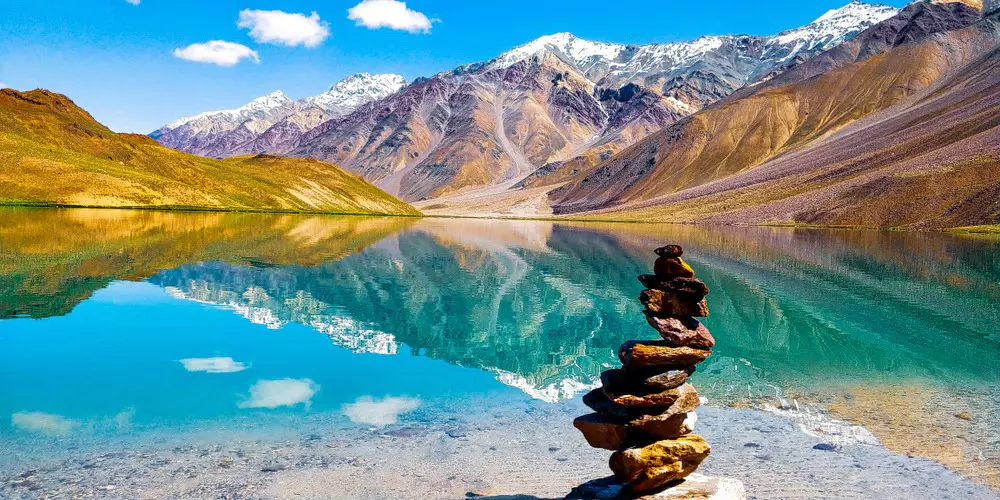Best time to visit Spiti Valley: Find the Perfect Time to Go
Spiti Valley is a beautiful place high in the Himalayas where people go for adventure, take amazing photos or just relax. But since the weather can be very bad and the terrain is rugged, choosing the right time to visit Spiti is very important. Each season brings out a different side of Spiti – lush summers, beautiful autumns with golden leaves and snowy winters. In this blog, we will share information about the weather in Spiti, how to get there and travel tips, so you can plan your trip based on what you want to see and do.
You might also like How to reach Spiti Valley
Best time to visit Spiti Valley

The best time to visit Spiti Valley is between May and October. During these months, the weather is good, and the roads are open from the two major cities, Manali and Shimla. People can see clear blue skies, beautiful views, and easy access to small villages and monasteries. Summer is great for road trips and nature walks, while early autumn is good because there are fewer people at this time and the views are golden and beautiful. In winter, from November to March, it is very cold, so it is only good for adventure travellers who are ready for snow, and they usually have to come from Shimla.
Spiti Valley Season-wise Breakdown
1. Summer Season in Spiti Valley (May to June)
Summer is the most popular time to visit Spiti Valley. The weather is pleasant, roads from both Manali and Shimla are open, and the landscapes are vibrant. It’s perfect for road trips, sightseeing, and treks, especially for first-time visitors.
2. Monsoon Season in Spiti Valley (July to August)
Spiti receives minimal rainfall, but the approach roads—especially via Shimla—may face landslides. The valley is green and less crowded, making it ideal for cultural experiences and visiting festivals like Ladarcha.
3. Autumn Season in Spiti Valley (September to Mid-October)
Autumn offers crisp air, clear skies, and golden-brown landscapes. It’s a great time for photography and peaceful exploration. Tourist crowds thin out, and road access remains open until mid-October.
4. Winter Season in Spiti Valley (Mid-October to March)
Winter transforms Spiti into a snow wonderland. However, extreme cold and road closures make travel challenging. Only the Shimla route remains open. Ideal for snow lovers and those seeking a raw, offbeat adventure, preparedness is key.
Conclusion
Spiti Valley has something special to offer in every season, whether it’s the greenery of summer or the snowy wonderland of winter. For many tourists, the best time to visit Spiti is between May and October when the weather is pleasant. But if you’re looking for a peaceful and snowy experience, winter can also be a magical time to visit, as long as you are well-prepared. Whenever you decide to go, you will be treated to Spiti’s rugged beauty, ancient monasteries, and stunning landscapes that will make your journey unforgettable. Remember to plan your trip carefully, be a responsible traveller, and let the untouched beauty of Spiti inspire you!
Here you can also check out How to Reach Manali
FAQs about the Best time to visit Spiti Valley
1. Is it safe to visit Spiti Valley during the monsoon?
Spiti Valley itself receives little rainfall, but approach roads (especially from Shimla) can be risky due to landslides. Travel with caution and always check weather updates.
2. Can we visit Spiti Valley in winter?
Yes, but only via the Shimla route, as the Manali route closes due to heavy snowfall. Winter travel is tough and suited for experienced adventurers ready for extreme cold.
3. When is the Manali to Spiti route open?
The Manali to Kaza route usually opens by mid-June and remains accessible until early October, depending on snowfall.
4. What should I pack for Spiti Valley?
Carry warm clothing even in summer, sunscreen, good trekking shoes, a basic medical kit, and essentials like dry snacks, cash, and IDs. Winters need heavy-duty woollens and snow gear.
5. Is acclimatisation important when visiting Spiti Valley?
Yes, acclimatisation is very important due to Spiti’s high altitude (above 3,000 meters). Spend a day or two at a lower altitude like Shimla or Kinnaur before reaching Spiti to avoid altitude sickness (AMS).
